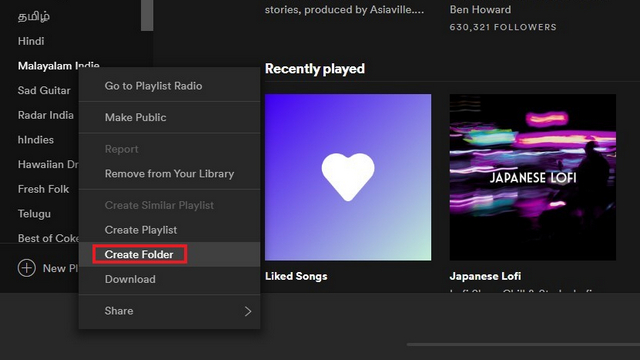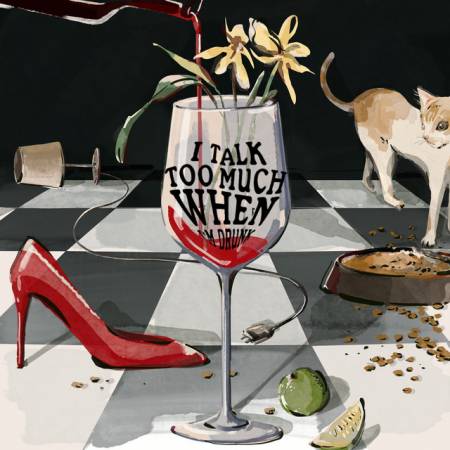I’m going to start things off with a hot take… Even though the proliferation of streaming services has made it *easier* for us to find new music, it’s actually taken the fun out of music discovery. If you’re using Spotify, you’re pretty much two clicks away from the discovery page. Scrimmaging through the feed during the height of the Soundcloud era brought with it so much joy, and who could forget doing legal things on sites like Mp3 Skull, Mp3 Juices, and Toxic Wap (that name slaps differently in 2020/2021).
Although one of the many blessings that streaming has bestowed upon us the gift of efficiently organizing our music. I’m sure a large majority of us go through periods where we find amazing tunes in a variety of ways, deciding how we store them however is a tricky process especially since the subject of organizing music is overshadowed by conversations about finding music. Having an effective way to organize your tunes saves so much time and makes life easier as it can be an absolute nightmare rummaging through a hodgepodge of tracks especially if you’re looking for something specific. In this piece, I share PRACTICAL methods of how we can find and organize the music we discover, and why it’s important for us to find new music.
The Importance of Finding New Music
In 2018, NME reported that by the time we reach 30 years old, the chances are high that we’d stop discovering new music. This is called ‘musical paralysis’, something which occurs when music fans stop actively seeking out new tunes. Around those years, there’s this overarching expectation for one to be excelling in their career, raising a family, and other demanding responsibilities so this kind of makes sense. Studies also suggest that the main reason people stop discovering new music is lack of time rather than being bored with up-and-coming acts.
The reasons to find new music are boundless and somewhat subjective too, although in my opinion there are two top reasons why we should prioritize music discovery. The first alludes to neuroscience since exposure to music laden with unfamiliar patterns and arrangements than what we are accustomed to contradicting our ingrained neural pathways. By listening to extremely unfamiliar music on a regular basis, to some degree, we engage in neuro-plasticity as we counter already existing mental maps and form new ones. You can actually check out the full article on Pitchfork where they go MUCH deeper into the subject of neuroscience and finding new music.

Secondly, music can serve as one of the most appealing gateways to appreciate and understand another culture. A great example of this is when I really got into Sango – a U.S based producer who throws in Brazilian influences with his brand of Trap. That led to a fascination with Tropicalia and a couple of months down the line… I found myself in a Capoeira class thanks to the Brazilian flair exhibited by one of my favorite producers.
Stay up to date.
New music and exclusive updates in your inbox weekly.
Organizing Your Music According to Months or Seasons
Creating playlists according to time is a great way to capture the phases of life that we go through in a particular moment in time. Imagine the month of January was filled with amazing adventures and everything just seemed to be going right for you. Going through the new music you found in Jan 2021 a couple of months/years later would feel like a delightful trip down memory lane, and the same goes for seasons. Organizing your playlists in this manner could also serves as a ‘song dump’ – a quick way to store the music that doesn’t have a designated destination the moment you find it if you’re feeling unsure where it belongs in your library.
This is a solution I’d primarily recommend for new music that you find, not really tracks you’ve grown up loving – we’ll get to that part. The concern that is associated with this strategy is the fact that the numbers of playlists are bound to increase but this is not a big deal. Particular since we’re granted the opportunity for familiarization as we revisit some of the tracks that were instantaneously dumped. One would think that through this route you’d have a REALLY clustered playlists, but realistically 60-70 is the average.
Organizing Your Music According to Mood
I get how it would be easy for tracks to overlap with various categories with the implementation of this method, but here is a solution… It’s perfectly fine if a track appears on more than one of your playlists. I don’t know where the notion of inserting a particular song for one specific playlist comes from.
Some moods can be emotion orientated or even action-orientated. A good example of the former would be a playlist that leans towards a melancholic feel, and for the latter, it would be something like a workout playlist. When it comes to action-orientated moods I feel it’s best if it aligns with the kind of lifestyle you lead, as in making playlists for the activities you engage in regularly so you have tried and tested music ready for that occasion instead of looking for tunes right before you start.

Organizing Your Music According to Genre
This is certainly the most common direction as it’s straightforward. Plus we’re given the freedom to lump the tracks we’re familiar with from adolescence/childhood to mingle with the new tracks we find which inevitably leads to better chances for familiarization. I would say though it makes sense to create ‘genre’ playlists for the types of music you generally listen to, and genres you’re trying to get into.
It wouldn’t make sense to have a Country, Gospel, or even a Blues playlist if those aren’t genres you delve into regularly as that creates a clutter of playlist you’re not excited to jump into. And ultimately this is what it’s about; organizing your music in a manner where you look forward to hitting play and easily finding something ‘moment appropriate’, instead of it feeling like a task. For the tracks I find in the genres I don’t usually engage with, I’d slot them into my monthly playlists and/or the mood-orientated music.
Organizing Your Music According to Era
One of my close friends suggested this and I was quite taken aback by this route. Although considering how he finds his music it’s actually very impressive. If you’re like him and you’re fascinated by the range of sounds ushered in by a particular moment in time then this is for you. This is even better if you’re on Spotify or you’re working with mp3s since you’re able to create subfolders like British Invasion and Summer of Love in your 60s Rock folder.

What’s beautiful about this is the fact that the playlist would be genre-fluid yet simultaneously capture a moment in time thus invoking a sense of nostalgia, and the tracks would carry a certain sonic aesthetic that creates a cohesive flow between transitions.
Organizing Your Music Using Folders (on Spotify)
Folders are something that tends to go unnoticed by most Spotify users. This is probably the best way to have a tidy-looking music library instead of a ton of playlists hovering on the side that sit idly as you create more. Follow these simple directions to create a folder:
- Right-click on any of your playlists
- Third from the bottom, you’ll see an option that reads “Create Folder”
- Then what you do is drag in some of your playlists in the designated folder.

What you’d probably want to do is create a folder with a particular theme, and slot all the playlists you’ve created with a similar one into that folder. So for example I’d include all my monthly playlists (June, July, August, etc) into that folder and give it a name, another example is the one I previously provided regarding the various eras. This is only applicable on Spotify for Desktop, plus the option to hit play on the entire folder is available on the Desktop app. So if I wanted to I could play all the music I found in a particular year through my monthly collection.







